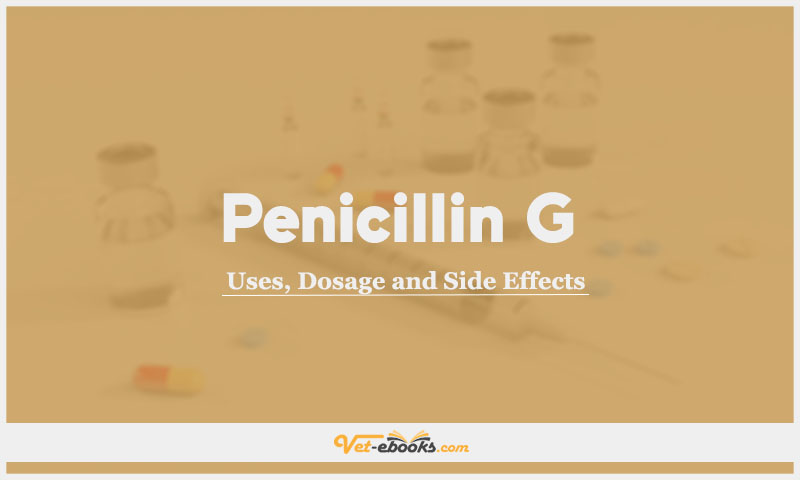Penicillin G (Benzyl penicillin) In Dogs & Cats: Uses, Dosage and Side Effects

Contents hide
Overview
- It binds to penicillin-binding proteins involved in cell wall synthesis, decreasing bacterial cell wall strength and rigidity, and affecting cell division, growth and septum formation. As animal cells lack a cell wall the beta-lactam antibiotics are safe.
- Kills bacteria in a time-dependent fashion.
Uses of Penicillin G (Benzyl penicillin)
- Beta-lactamase-susceptible antimicrobial.
- Narrow spectrum of activity, susceptible to stomach acid degradation.
- Used parenterally for infections caused by sensitive organisms (e.g., Streptococcus, Clostridium, Borrelia burgdorferi, fusospirochaetes).
- Sodium salt is well absorbed from s.c. or i.m. sites.
- Procaine penicillin is sparingly soluble, providing a slow-release ‘depot.’
- Penicillin kills in a time-dependent manner; maintaining tissue concentrations above the MIC is crucial throughout the interdosing interval.
- Patients with significant renal or hepatic dysfunction may require dosage adjustment.
Dose of Penicillin G (Benzyl penicillin) in Dogs and Cats
Dogs, Cats:
- Penicillin G sodium: 15–25 mg/kg i.v., i.m. q4–6h.
- Penicillin G procaine: 30 mg/kg s.c. q24h.
- Penicillin G procaine and benzathine combined: 15 mg/kg procaine penicillin with 11.25 mg/kg benzathine penicillin equivalent to 1 ml per 10 kg body weight.
Drug Dosage Calculator
You Should Give:
Side Effects of Penicillin G (Benzyl penicillin) in Dogs and Cats
- 600 mg of penicillin G sodium contains 1.7 mEq of Na+.
- This may be clinically important for patients with restricted sodium intakes.
- The i.m. administration of >600 mg/ml may cause discomfort.
Contraindications of Penicillin G (Benzyl penicillin) in Dogs and Cats
- Do not use in animals sensitive to beta-lactam antimicrobials.
Some Notes:
- Aminoglycosides may inactivate penicillins in vitro when mixed in parenteral solutions.
- However, they act synergistically when administered concurrently in vivo.
- Procaine can antagonize the action of sulphonamides.
- Therefore, procaine penicillin G should not be used with sulphonamides.
Tip
Do You Want To Increase Your Veterinary Knowledge and Practical Skills?
You Can Now Browse and Download +3000 Books For Veterinary Professionals & Students Online.
Download Veterinary Books












